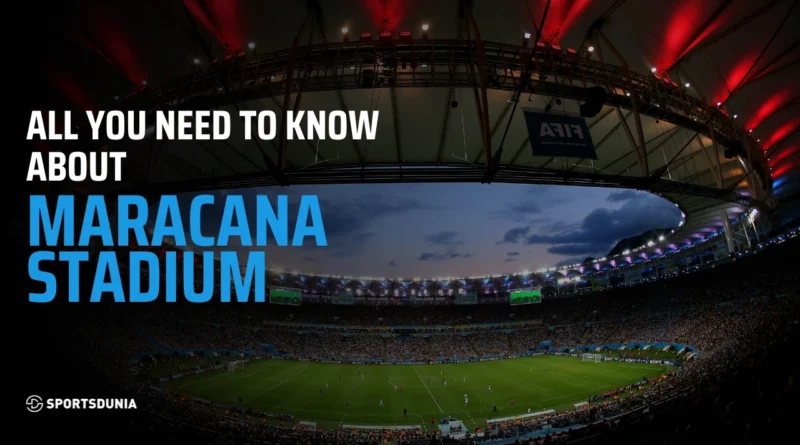Maracana Stadium: capacity, size, events, tickets and legacy
Standing tall as one of the most iconic stadiums in the world is the Maracana stadium, situated in Maracana in Rio de Janeiro. It is also known as the Estadio Jornalista Mario Filho and is one of the oldest stadiums in Latin America.
It has a seating capacity of over 75000 people and has had several iconic moments. The Stadium has hosted finals of some of the biggest competitions in the world alongside some of the biggest concerts. It attracts millions of spectators yearly and is undoubtedly one of the stadiums that every sports lover has to cover once in their lifetime.
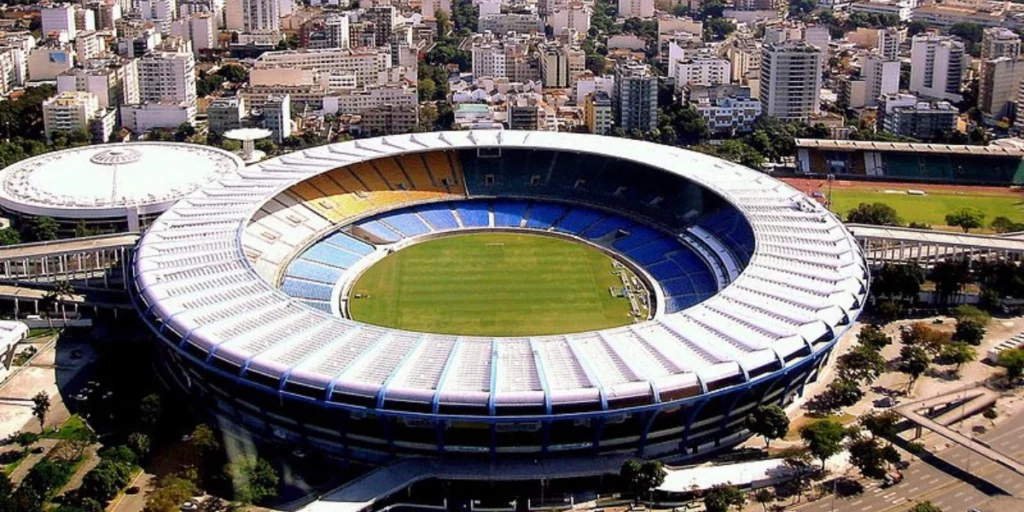
In its glorious 75-plus-year history, the stadium has seen many incredible highs and some painful lows. Let us discover everything there is to be known about Maracana Stadium today.
| Stadium Name | Maracana Stadium and Estádio Municipal (old name) |
| City | Rio de Janeiro |
| Area | Maracanã |
| Association | Rio de Janeiro State Government |
| Home to | The Brazil National Team (Men and Women) |
| Capacity | 73,139 (New Maracana Stadium) 173,850 (Old Maracana Stadium) |
| Pitch Size | 105 m × 68 m (344 ft × 223 ft) |
| Major Events | 1950 FIFA World Cup Final, 2014 FIFA World Cup Final, 2016 Olympic and 2016 Paralympics |
Overview of Maracana Stadium
The stadium opened on 16 June 1950 and was built to host the 1950 FIFA World Cup, the largest stadium of the time. However, due to safety concerns, the stadium capacity has been reduced to 78,000 after renovations, and it is still one of the biggest stadiums in the world. The stadium is currently owned and managed by the government of Rio de Janeiro, with football being the primary sport in the area. It is also the current home ground of the Brazil national football team and other Rio clubs like Fluminense and Flamengo.
Some iconic moments from the Maracana Stadium include the infamous 1950 FIFA World Cup final, where home side Brazil shockingly lost to Uruguay. The match ended 1-0 and became known as the “Maracanazo.” Another historic World Cup final at the Maracana Stadium was the 2014 World Cup final when Mario Gotze handed Germany a 1-0 win over Argentina despite Lionel Messi’s efforts to guide his side to glory.
The Maracana was also the main venue for the 2016 Rio Olympics and hosted the opening and closing ceremonies at the Paralympics. The Maracana Stadium is an architectural marvel with a circular design that is vast and open. The architecture is so precise and planned that it offers a stunning view of the pitch from almost every seat in the stadium. After renovations, it has been covered with a roof and better seat quality while preserving its historical charm. Besides sports, some global artists who have performed at the Maracana include Beyonce, Coldplay, Paul McCartney, and others. The Maracana Stadiumis not just a venue but an emotion for Brazilians and symbolizes national pride.
Importance in Football History
When we talk about some of the most iconic football venues in the world, the Maracana Stadium has a special place in every football fan’s heart. It has had a monumental cultural impact on the matches it has hosted and how they have been hosted, making the entire executions done by stadium authorities deserving of praise over the years. The stadium featured a record attendance of 173,850 fans during the 1950 World Cup final. However, some media outlets report that the official number was over 210,00, a current record.
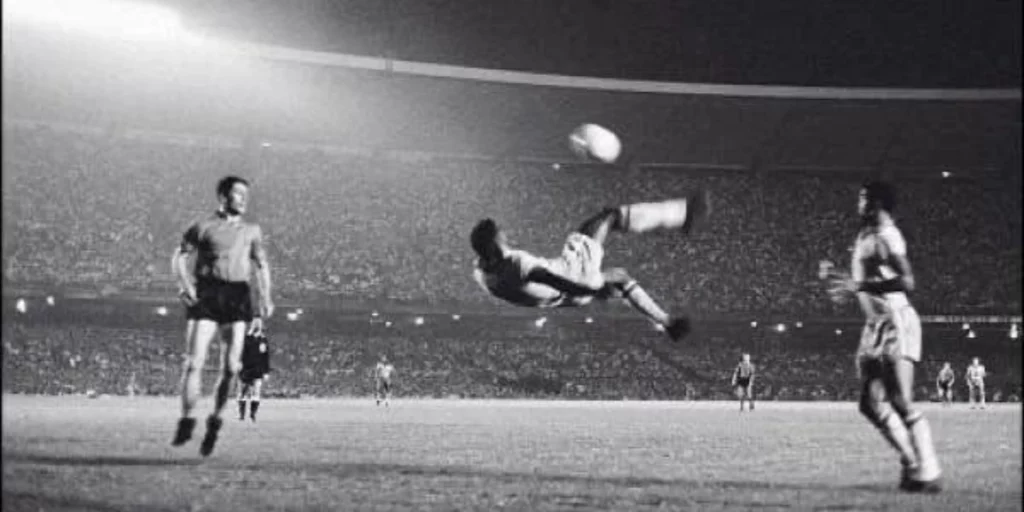
Besides the Maracana blow where Brazil suffered a defeat at the hands of Uruguay in 1950, it served as a reminder for the entirety of Brazilian football to rise back. This match to this day, remains the biggest upsets in the history of the game as the entire crowd of over 200,000 people sat shut as Brazil suffered. In 1969, the Maracana witnessed a historic moment as Pele scored his 1000 career goal in a match between Santos and Vasco da Gama through a penalty.
Forty years after the “Maracanazo,” Brazil finally avenged its World Cup final loss in the Copa America in 1989, as it defeated Uruguay with the same scoreline of 1-0 as Romario had guided it home to victory. Another record in the Maracana was set in 1963 during the Fla-Flu Derby between Fluminense and Flamengo, as 194,603 spectators attended the match, which unfortunately ended in a draw.
ALSO READ: Wembley Stadium: capacity, size, events, tickets and legacy
The Old Maracana Stadium
History of the Original Maracana Stadium (1950-2000)
Originally known as the Estadio Jornalista Mario Filho, the Maracana Stadium was officially opened on 16 June 1950. It was specifically built to host the 1950 FIFA World Cup and immediately became the most famous stadium in the world for the upsetting final for the national fans. It was also one of the largest sporting venues in the world and was known for the electrifying atmosphere created by the fans.
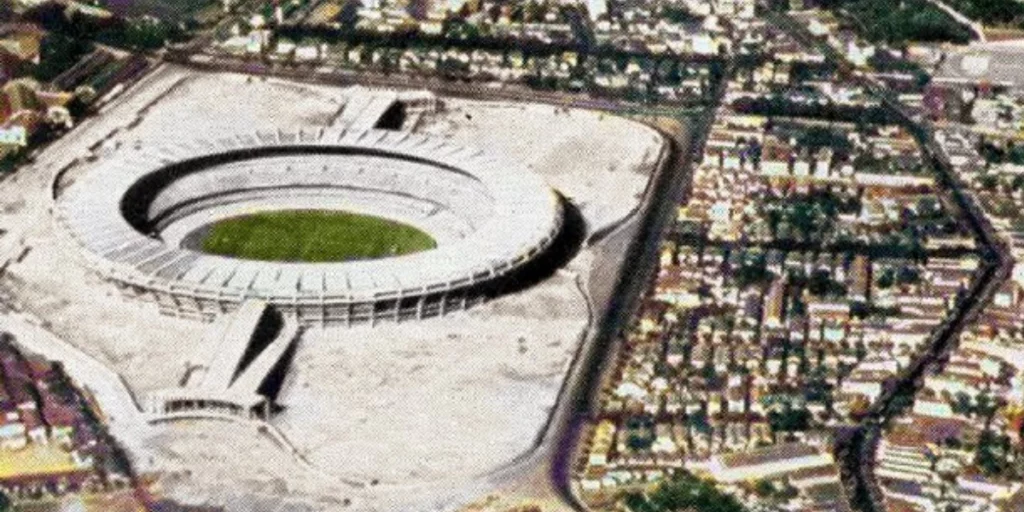
The stadium was constructed in a record-breaking two-year timeline, beginning in 1948 and completed in 1950. The first match at the venue was an integrator friendly between Rio de Janeiro All-Stars and Sao Paulo All-Stars, which over 150,000 people attended. The Maracana hosted a record number of attendees during the 1950 World Cup but left a deep scar in the hearts of Brazilians as the tournament ended in a final upset.
Legacy
Throughout the 1950s and 1960s, it was a hub of football, hosting countless matches and showcasing some of the best players of all time to play their talents in front of huge crowds. Some of the big names included Pele, Garrincha, and Zico. It also hosted matches for Botofogo and Vasco da Gama, attracting massive crowds. However, by the late 1990s, the stadium had started showing signs of wear and tear, and people had begun raising safety concerns about the arrangements. This led to a series of renovations for the 2000 Club World Championship, which kickstarted a new era for the Maracana.
Location and Design of the Old Maracana Stadium
The iconic Maracana stadium is located in the Maracana neighborhood of Rio de Janeiro in Brazil. It is also close to the city’s downtown area, and being centrally, it is easily accessible to most of the town’s population, making it an essential part of Brazil’s urban landscape. It also has key monuments like Quinta da Boa Vista Park and the Maracana River near it, making public transport even better around the stadium for football fans in the entire country.
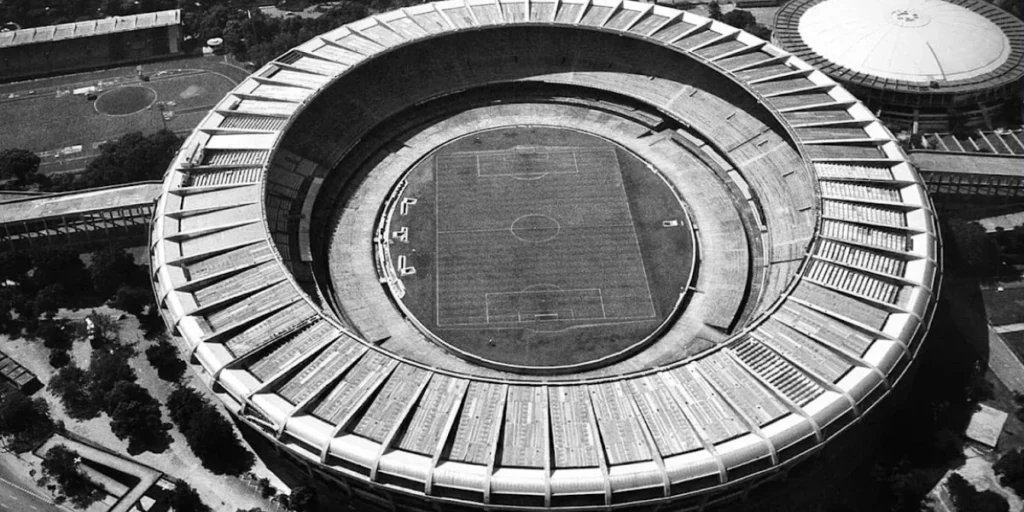
Miguel Feldman, Rafael Galvao, and Wanda Magalhaes were three Brazilian designers and architects behind the vision of the colossal arena, the biggest stadium of its time. The team consisted of Waldir Ramos, Oscar Valdetaro, Pedro Paulo B. Bastos, Orlando Azevedo, and Antônio Dias Carneiro. They were inspired by ancient Roman architecture and the Colosseum, giving the Maracana a bowl-like design, which left much of the seating area uncovered and exposed to the field.
While the stadium may look minimalist from the outside, it has stood the test of time and still stands tall despite not having giant decorations; it is entirely functional due to the strong foundations laid back in 1950. Despite the many renovations since 1990, it has access ramps spiraling around its primary structure, allowing spectators to move comfortably without any rush in the stadium, showcasing the key importance of safety. It has still managed to keep its original landscape and continues to amaze football fans with its beauty.
Iconic Football Events at the Maracana
The Maracana stadium has been the venue for the main events in the sporting world for a long time. It is enriched in sporting history and some of the most memorable matches hosted in it include the 1950 FIFA World Cup final between Brazil and Uruguay. The match ended up with the stadium getting a new identity as the “Maracanazo” and Uruguay lifting their second World Cup trophy.
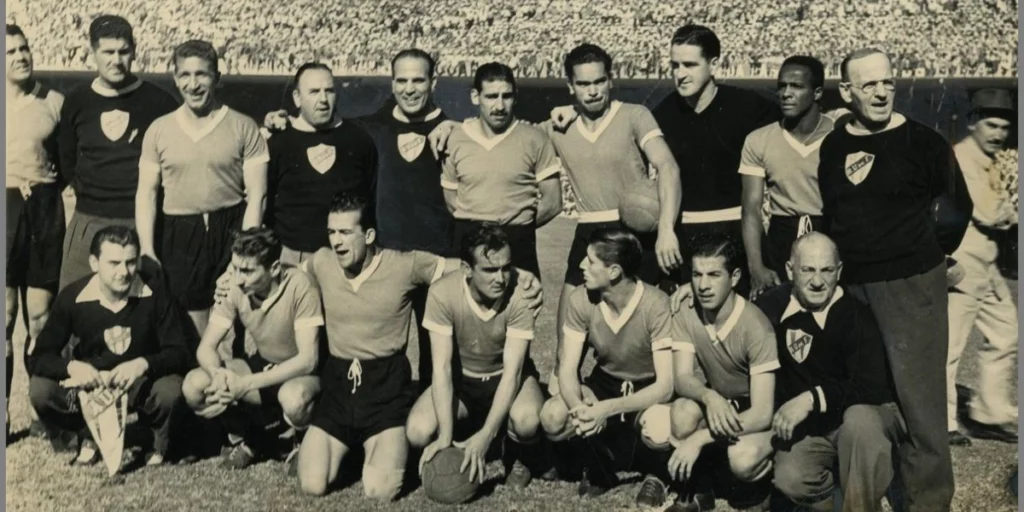
The tournament saw record-breaking attendances that only matched thirteen years later during a derby between Flamengo and Fluminense. The stadium was constructed in a record-breaking two-year timeline, beginning in 1948 and completed in 1950. The first match at the venue was a friendly inaugurator between Rio de Janeiro All-Stars and Sao Paulo All-Stars, and over 150,000 people attended. The Maracana hosted a record number of attendees during the 1950 World Cup but left a deep scar in the hearts of Brazilians as the tournament ended in a final upset.
Throughout the 1950s and 1960s, it was a hub of football hosting countless matches and showcasing some of the best players of all time to play their talents in front of huge crowds. Some of the big names included, Pele, Garrincha and Zico. It also hosted matches for Botofogo and Vasco da Gama and all these matches attracted massive crowds. However, by the late 1990s, the stadium started showing signs of wear and tear and people started raising safety concerns over the arrangements. This led to a series of renovations for the 2000 Club World Championship which kickstarted a new era for the Maracana.
The New Maracana Stadium
Construction and Opening of the New Maracana and its Features (2013)
The stadium stood the test of time but started showing signs of being worn out after hosting millions and giving them moments to remember throughout their lives. The central angles for proper renovation of the Maracana began in 2010 in preparation for two major future events, the 2014 FIFA World Cup and the 2016 Summer Olympics. The government decided that rather than demolishing the old structure, they would allow the people to carry forth their memories and reconstruct by modernizing the facilities while preserving its culture and history.
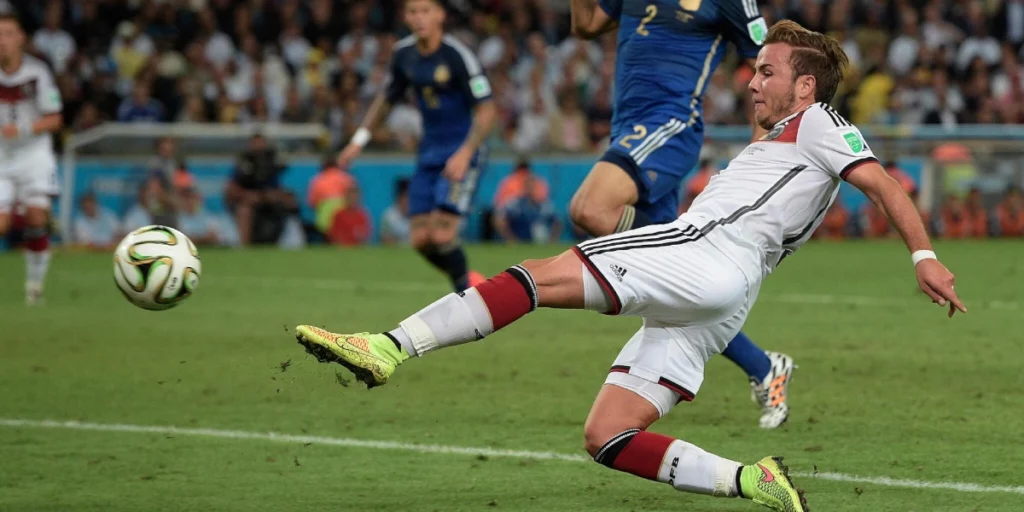
The stadium had started showcasing signs of security concerns which reprimanded FIFA for taking the step for renovation. They reduced the capacity of the stadium while adding amenities and special areas. The original capacity of 200,000 was significantly reduced to just 78,838 adhering to international safety regulations. They removed the old roof and replaced it with a lighter membrane which gave it a more modern look and improved the acoustics for the fan experience.
They added several new areas like VIP areas, press rooms, improved dressing rooms and also made the stadium have state-of-the-art security and technology. They also had a great environmental reason in the new roof which had rainwater collection capabilities emphasizing sustainability, which increased the cost of reconstruction and renovation to almost $500 million making it one of the most expensive stadium works in history.
The newly renovated Maracana was officially opened to the public on 27 April 2013, and a friendly match between former Brazilian players was hosted. Soon, the first serious match was also held in June between England and Brazil, ending in a draw with both sides scoring twice. The stadium then successfully hosted the 2014 FIFA World Cup, which had seven matches, including the finals. Two years later, it also hosted the Olympics and the opening and closing ceremonies, adding more feathers to its rich history.
While the Old Maracana bled culture and history, the new Maracana symbolizes the same culture with modern facilities and a new image. The memories of the old stadium still live vividly in the hearts of the fans, and the latest work in the stadium completely justifies the renovation. The stadium has a circumference of 800m and is quite easily accessible from multiple sides thanks to its seamless entry and exit gates. It is fitted with help signs and volunteers to assist the fans at all stages. The stadium is fully digital and is quite accessible to everyone.
New Maracanã Stadium Capacity and Field Size
FIFA sanctioned the new Maracana Stadium’s infrastructure and safety precautions before new events were hosted at the venue. It has a seating capacity of 78,838. This makes the Maracana the biggest stadium in Brazil and one of the biggest in South America. The pitch dimensions of the Maracana are 105 meters by 68 meters (344 ft x 223 ft), followed by FIFA’s standard requirements for international matches.
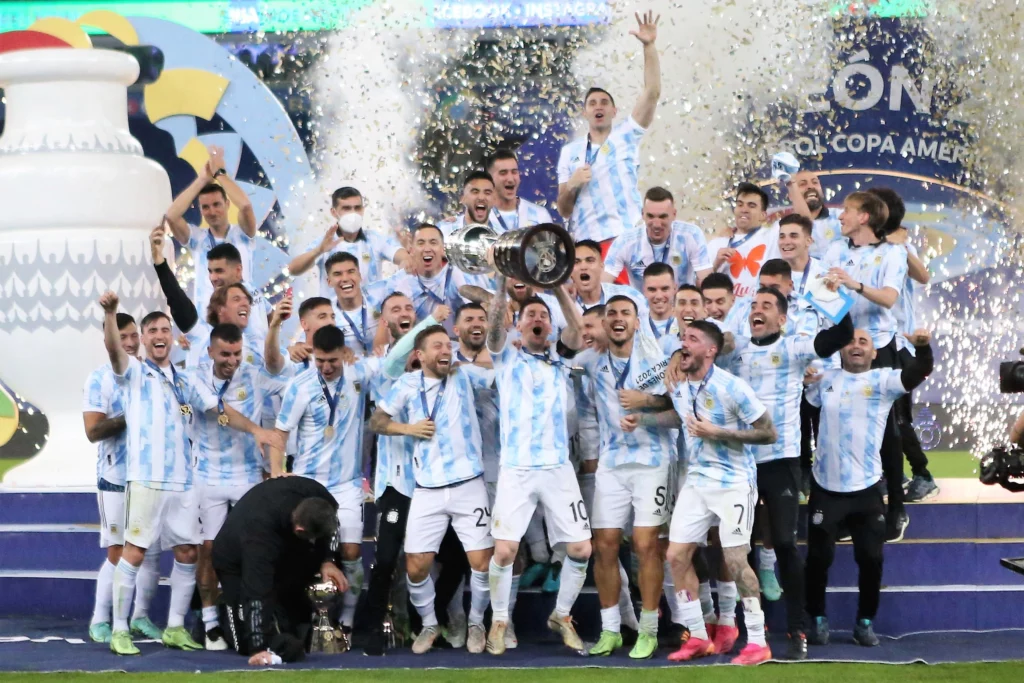
The field’s circumference is 800 meters, including the outer edge of the stadium’s circular roof and the seating area’s covers. The new seats are updated for fan comfort, and the pitch is a hybrid grass pitch, which is the perfect set-up for Brazil’s tropical climate. The new Maracana hosts matches and events of all types, including club matches and international matches, as well as large concerts and events, which maintain the status of the stadium as a global venue.
The stadium currently falls under category 4 of the UEFA standards, the Elite category, and the highest classification for the stadiums. This means it qualifies perfectly to host international UEFA and FIFA World Cup matches.
Tickets and Pricing
How to buy Maracana Stadium Tickets
The tickets for events held at the Maracana are on sale at the official club websites for club matches and other main ticket platforms like Ticketmaster or Ingresso for other events. For matches played between Flamengo, Fluminense, or other Brazilian clubs, the ticket prices are set at an affordable rate with general admission beginning for as low as $6 to $20. The Premier Seating area then reaches from $30 to $60 and the VIP or Executive lounges cost as high as $100 and above.
For International matches of the Brazilian team, the ticket prices soar higher in the range of standard seats beginning at $20 to $50. The VIP seats go from $60 to $120 and the Hospitality packages can reach above $200 as well which would include food, drinks and other special amenities for the fans. For concerts and other events, the prices are subject to the organizers given the scale and hype of the performers. However, as per old prices, the general admission usually starts from $20 to $80 while the VIP and front row tickets fall in ranges between $120 and $300.
| Competition | Category | Price for adults |
| Club competitions | General Access | $6 to $20 |
| Premier Area | $30 to $60 | |
| VIP or Executive Lounge | $100 and above | |
| International competitions | General Access | $20 to $50 |
| Premier Area | $60 to $120 | |
| VIP or Executive Lounge | $200 and above | |
| Concerts or other events | General Access | $20 to $80 |
| Premier Area | $120 | |
| VIP or Executive Lounge | $300 and above |
For concerts and other events, the price depends on the artist and usually starts from three figures. The best seats in the house easily go to four-digit figures.
Ticket Categories and Accessibility Options
The Maracana Stadium offers several different categories and prices in ticket preferences to suit their customers. Each category promises something different and unique and it ranges from the basic to the most luxurious experiences. The first of the lot is the General Admission also called the Arquibancada which consists of the upper and lower tiers around the pitch. It offers a good view of the pitch action and is the most affordable and popular choice for fans.
After that is the Premium Seating area or the Maracana Mais which is located centrally in the stadium. It offers padded seats with more comfort and better angles with access to private bars and lounges as well. It is priced above the general area with an upgraded experience but is still cheaper than the VIP pricing. The Tribuona de Honra or the VIP seats are the exclusive and best sections of the stadium.
They have a private entrance as well as luxury lounges with complimentary food and drinks and concierge services for the best fan experience. They are high-end seats ideal for corporate and special guests.

The Camarotes or the Hospitality Boxes are private suited over the pitch which offer a personal service, catering and washrooms. They are also available for groups or business partners and are the most expensive option at the Maracana but the amenities justifies their cost.
The Maracana stadium is perfectly equipped to provide physically challenged fans with the best services and experience. It has a reserved seating area for those who can use wheelchairs and get seats for their companions or caretakers in multiple stadium areas. They have separate ramps, entrances, and elevators for their safety.
For visually impaired fans, the stadium offers audio assistance and accessible restrooms as well as special parking areas, for them and for other fans with reduced mobility overall providing a highly inclusive experience for everyone.
Visiting Maracana Stadium
Tips for Attending Football Matches
Arrive early at the stadium to experience a hassle-free entry. Volunteers will be available at every turn to guide the visitors.
For obvious reasons, hazardous objects are not allowed into the stadium.
Guided Tours: Exploring Maracana’s Football Legacy
Maracana Stadium offers a football tour for tourists. This presents them with a golden chance to walk around the iconic stadium. This 90-minute tour comes with a guide who explains the origins of the famous points and gives an in-depth explanation of the venue.
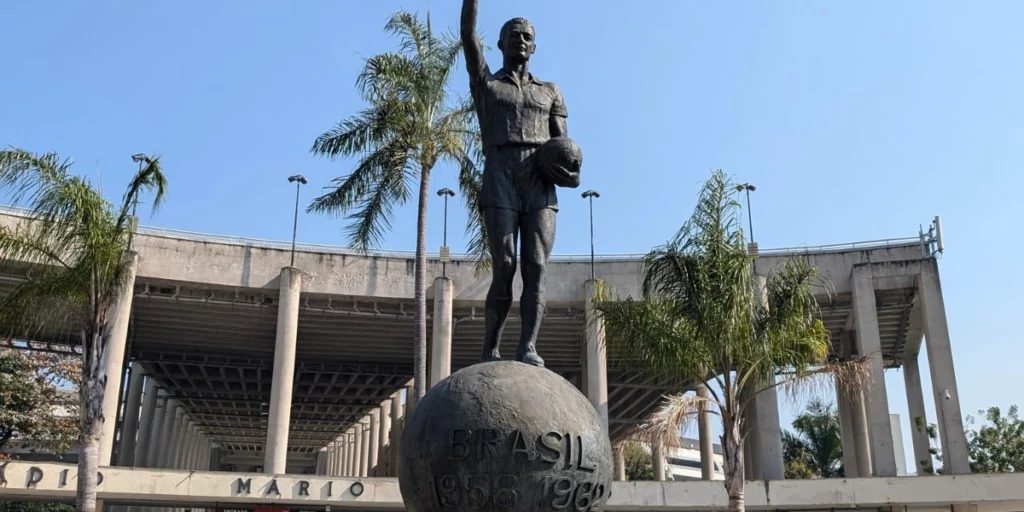
The Maracana tour offers trips to the historical exhibits of the stadium as well as memoirs of the legendary players who have graced its field. It then takes the fans to the locker rooms where greats like Pele and Zico once prepared for the matches. Fans are allowed to visit the press rooms as well as access the pitch for pictures.
The official tour of the Maracana lasts almost 50 minutes and tickets can be purchased online to avoid queues. Several third-party companies also offer a tour of the stadium combined with other attractions in the gorgeous Brazilian city including a sight of Christ the Redeemer. Some other additional experiences at the stadium include a VR experience to live the stadium’s history from a completely new and modern perspective. Tourists and fans are also allowed to see the trophies at the stadium and get pictures clicked with them.
While the tours are generally conducted in Portuguese, English speaking guides are also available on request. The Stadium remains a must visit destination for anyone planning a trip to Brazil as the reviews have always been great with fans wanting to return and not just tour but watch a match at the venue someday.
Nearby Attractions for Football Fans
The iconic stadium is situated centrally in the city, which offers fans and tourists quick detours to other amazing locations in the city. Closest to the Maracana is the Sao Januario Stadium which is the home of the Brazilian club, Vasco da Gama and is known for its passionate fans and history.
Secondly is the Nilton Santos Stadium which is home of Botofogo. Lastly is the Flamengo Museum which showcased memorabilia and trophies as well as jerseys and old photographs which would be a delight to see for any football fan as to how deeply football is engrained in Brazilian history.
Maracana Stadium Events Beyond Football
While the Maracana is known for its rich football history, it has also been an essential venue for large gatherings and a multitude of non-football events over the years, cementing its status as a global venue and hub of entertainment in Rio de Janeiro.
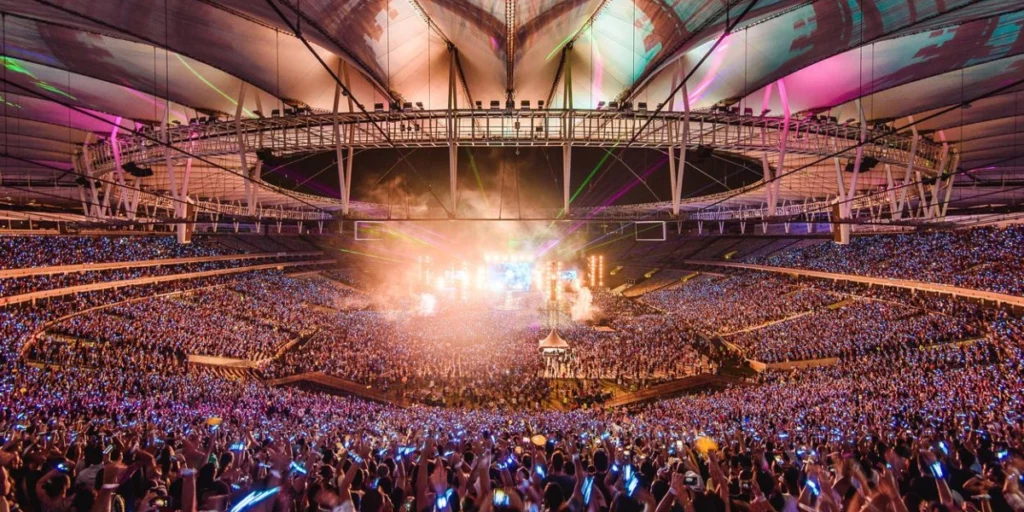
Over the decades some of the biggest bands such as the Rolling Stones, Paul McCartney, Coldplay, Beyonce, Madonna and others have performed at the Maracana giving electrizing visuals and memories to the fans. The stadium has also been a site for significant religious gathering and events such as Pope John Paul II’s mass at the Maracana in 1980 and 1997 which drew huge crowds each time.
In 1951, the Maracana also hosted historic martial arts matches between Japanese Judoka Masahiko Kimura and Brazilian Jiu-Jitsu Helio Gracie. While Kimura won the home crowd applauded both the fighters for their great display of physical combat popularizing the “Kimura Lock” in that event. The Maracana has also hosted several political rallies as well as cultural festivals to celebrate Brazil’s diverse heritage and history.
The Legacy of Maracana Stadium
From hosting the World Cups to concerts and events, the Maracana is a rich part of Brazil’s history and culture and continues to serve as a reminder of the glorious past. The stadium has showcased smooth functioning of events over the years and is a global venue loved by many. It has recorded some of the biggest attendances ever and as Brazil’s largest stadium it serves as a symbol of national pride for Brazilians.
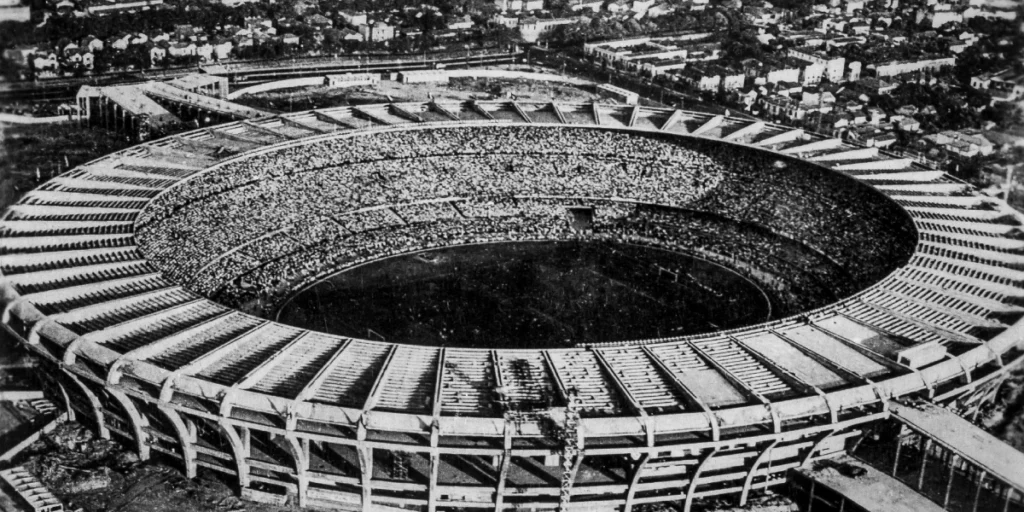
From witnessing iconic moments to the biggest heartbreaks, the stadium has stood the test of time, and after renovations, it has outshined several newly constructed venues as well. The Maracana’s future is bright as Brazil continues to rise on the football stage, and its players showcase a resurgence in national form. Huge crowds are expected to fill the Maracana and exemplify an atmosphere never imagined.
Conclusion
The Maracana Stadium is more than just a sports venue, it is an emotion and a living testament to Brazil’s love for football and culture. From its early days as the largest stadium of the world to a modern hub of entertainment and state of the art facilities, the Maracana has played a pivotal role in celebrating some of the most iconic moments of the sport.
From hosting religious gatherings to concerts and cultural events, it is a venue for the future standing as a bridge of the past. It represents the Brazilian resilience for life and welcomes fans from all walks of life and corners of the world, uniting them under one common banner.
Whether it is a football match a concert, or just a fan tour of the Stadium, one can get goosebumps by imagining the history created at the venue over the years in a split second and live a legacy that will endure and inspire future generations to come and experience the spirit of Brazil.
FAQs
Q. Where is Maracana Stadium?
A. The Maracana Stadium is situated in Maracana in Rio de Janeiro, Brazil.
Q. Who plays at Maracana Stadium?
A. The Brazilian National Team and several Brazilian National clubs play at the Maracana Stadium.
Q. How many people does Maracana Stadium hold?
A. The Maracana can hold 73,139 people.
Q. How big is Maracana Stadium?
A. The Maracana Stadium is 105 m × 68 m in dimensions
Q. Is Maracana Stadium covered?
A. Yes
